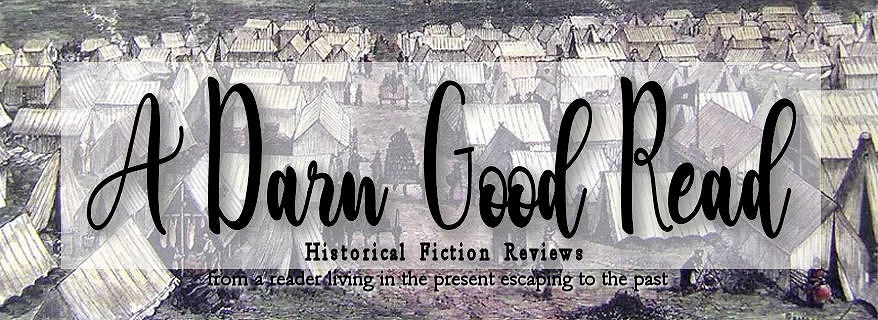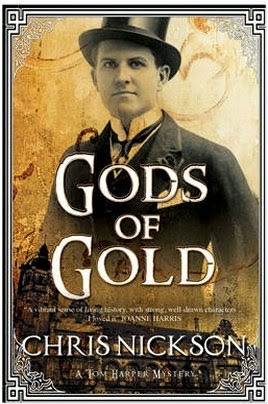I recently submitted my blog to the Australian Book Blogger Directory. This morning I was making my way down the list of blogs in the Historical Fiction section when I came across Steve Harrison's entitled Storming Time dedicated to his debut novel TimeStorm.
4,356 genres? A slight exaggeration, perhaps, but I love it!
Of course, being a historical fiction fan, I was hooked by the first sentence of the book description. Reading further I realised this wasn't going to be the straight historical I'd expected.
Did I still want to read it? Yes!
Why? There are a number of reasons. Besides being an unusual idea for a novel, references to C.S. Forester, Patrick O'Brian and Alexander Kent can't be ignored. Plus it has all the right elements for an exciting read. Another incentive was the great reviews I read on Amazon and Goodreads. Steve Harrison, though born in Yorkshire, U.K., is considered to be an Australian author and I can add this book to the Aussie Author Challenge 2015. Love the title. Love the cover.
So, what genre is it? For my purposes I'm calling it a historical fiction time slip novel. I don't have the stamina or the will to list all 4,356 genres ...
In 1795 a convict ship leaves England for New South Wales in Australia. Nearing its destination, it encounters a savage storm but, miraculously, their battered ship stays afloat and limps into Sydney Harbour. Here, the convicts rebel, overpower the crew and make their escape, destroying the ship in the process. Fleeing the sinking vessel with only the clothes on their backs, the survivors struggle ashore. Among the escaped convicts, seething resentments fuel an appetite for brutal revenge against their former captors while, for their part, the crew attempts to track down and kill or recapture the escapees. However, it soon becomes apparent that both convicts and crew have more to concern them than shipwreck and a ruthless fight for survival; they have arrived in Sydney in 2017. TimeStorm is a thrilling epic adventure story of revenge, survival and honour set in a strange new world of unfamiliar technology and equally unfathomable social norms.
In the literary footsteps of Hornblower, comes Lieutenant Christopher 'Kit' Blaney, an old-fashioned hero, a man of honour, duty and principle, dragged into the 21st century - literally. A great fan of the grand seafaring adventure fiction of CS Forester, Patrick O'Brien and Alexander Kent, and modern action thriller writers such as Lee Child, Steve Harrison combines several genres in his debut novel.
The book was inspired by a replica 18th century sailing ship on Sydney Harbour and a question from Steve's brother, Tony: "What if that was a real convict ship?" TimeStorm explores that question in a fast-paced story as a group of desperate men from the 1700s clash in 21st century Sydney.
TimeStorm is available as an e-book or paperback from Amazon AU, Amazon US, Amazon UK or direct from Elsewhen Press
This is a very entertaining blog, but what actually made me chuckle is his post on publishers having difficulty allocating his novel to a particular genre and his praise for Elsewhen Press who took up the challenge and published it.
" ... They weren’t daunted by the 4,356 genres included in the novel ... and instead let the story speak for itself ..."
" ... They weren’t daunted by the 4,356 genres included in the novel ... and instead let the story speak for itself ..."
4,356 genres? A slight exaggeration, perhaps, but I love it!
Of course, being a historical fiction fan, I was hooked by the first sentence of the book description. Reading further I realised this wasn't going to be the straight historical I'd expected.
Did I still want to read it? Yes!
Why? There are a number of reasons. Besides being an unusual idea for a novel, references to C.S. Forester, Patrick O'Brian and Alexander Kent can't be ignored. Plus it has all the right elements for an exciting read. Another incentive was the great reviews I read on Amazon and Goodreads. Steve Harrison, though born in Yorkshire, U.K., is considered to be an Australian author and I can add this book to the Aussie Author Challenge 2015. Love the title. Love the cover.
So, what genre is it? For my purposes I'm calling it a historical fiction time slip novel. I don't have the stamina or the will to list all 4,356 genres ...
In 1795 a convict ship leaves England for New South Wales in Australia. Nearing its destination, it encounters a savage storm but, miraculously, their battered ship stays afloat and limps into Sydney Harbour. Here, the convicts rebel, overpower the crew and make their escape, destroying the ship in the process. Fleeing the sinking vessel with only the clothes on their backs, the survivors struggle ashore. Among the escaped convicts, seething resentments fuel an appetite for brutal revenge against their former captors while, for their part, the crew attempts to track down and kill or recapture the escapees. However, it soon becomes apparent that both convicts and crew have more to concern them than shipwreck and a ruthless fight for survival; they have arrived in Sydney in 2017. TimeStorm is a thrilling epic adventure story of revenge, survival and honour set in a strange new world of unfamiliar technology and equally unfathomable social norms.
In the literary footsteps of Hornblower, comes Lieutenant Christopher 'Kit' Blaney, an old-fashioned hero, a man of honour, duty and principle, dragged into the 21st century - literally. A great fan of the grand seafaring adventure fiction of CS Forester, Patrick O'Brien and Alexander Kent, and modern action thriller writers such as Lee Child, Steve Harrison combines several genres in his debut novel.
The book was inspired by a replica 18th century sailing ship on Sydney Harbour and a question from Steve's brother, Tony: "What if that was a real convict ship?" TimeStorm explores that question in a fast-paced story as a group of desperate men from the 1700s clash in 21st century Sydney.
TimeStorm is available as an e-book or paperback from Amazon AU, Amazon US, Amazon UK or direct from Elsewhen Press




















